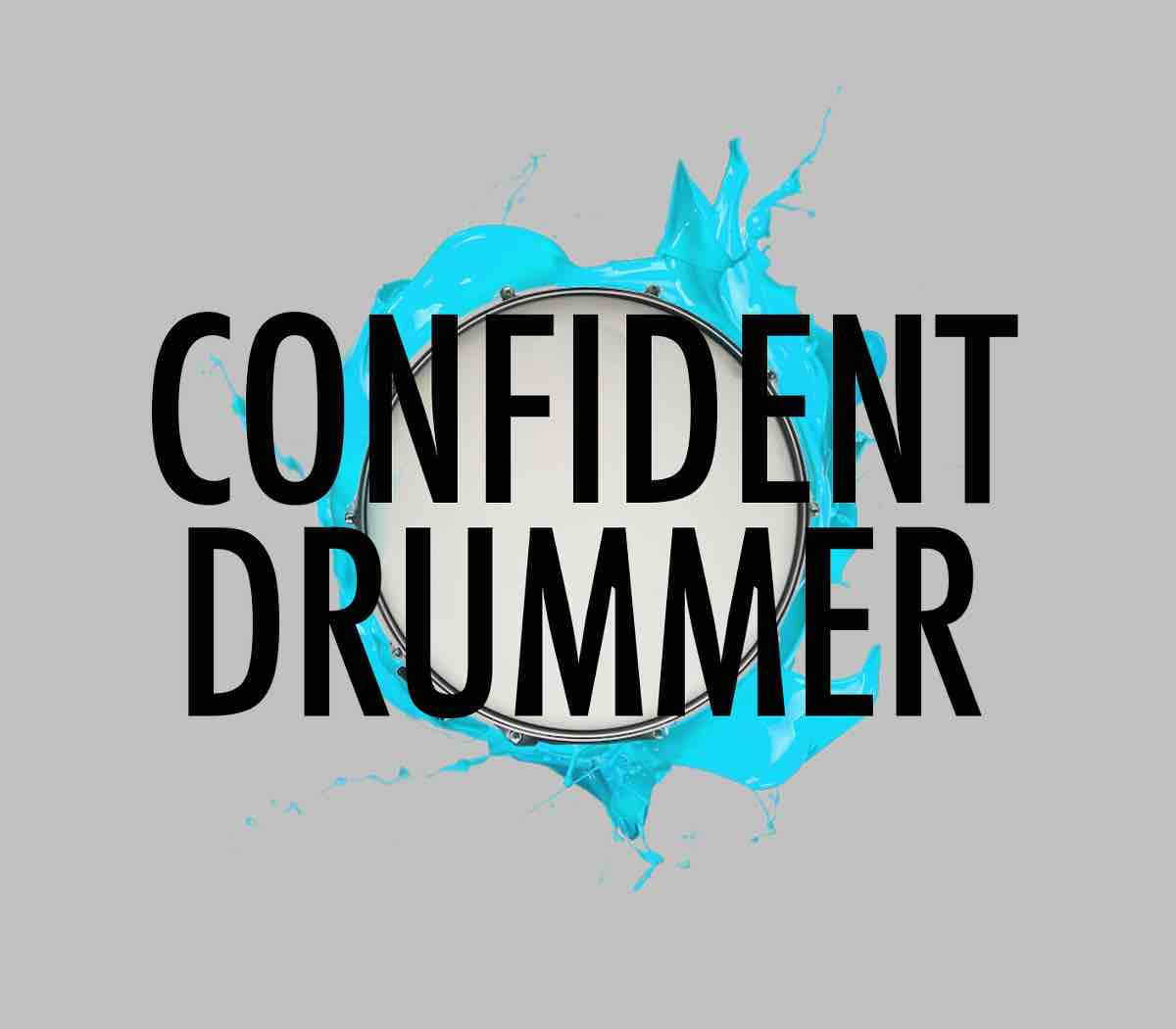One of the fundamental concepts to understand about working in the studio is that recording essentially means capturing sound.
This capture process goes through a series of layers, which eventually form a chain.
Let’s use the photograph metaphor. To get a good picture we need first of all a beautiful landscape, and then we have to make sure that also the camera, the lens, the technique we use, the positioning, our artistic eye (and so on) are great.
Exactly the same is true for recording drums.
The interesting thing is that the chain of sound influences the quality of the final result according to two principles:
- It’s the weakest link in the chain that most affects the overall quality.
- The first links have much greater weight.
The implications are huge, as it becomes immediately clear how crucial it is to avoid the classic mistake of overlooking the initial phases of recording, thinking that flaws and errors can be fixed in post production, that is, after all recording is done.
Any sound engineer will confirm how critical it is to capture a beautiful sound at the source, rather than relying on subsequent processing.
There are five components that influence the sound that will end up on the record, each of which is made up of additional links. In order of importance we have:
- The way we play (grip, technique, musical concept).
- Our gear (hardware, drums, cymbals, drumheads, tuning, beaters).
- The recording room (size, shape, acoustic treatment).
- The sound engineer (how he chooses, places and uses microphones, DAW, converters, preamps, equalizers, compressors, effects and plugins).
- The studio hardware (the quality of all the above items).
As we can see the hardware, albeit being the most expensive part, as well as the one typically assumed to be paramount, is actually at the bottom of the list.
Not because it’s not important, but because it’s much less so than the others.
How is this possible? If we think about it, it’s easy to see that if we are unable to get a good sound out of our gear, it doesn’t matter how beautiful the drums we use are.
If the drums sound bad, it doesn’t matter how well the room is acoustically treated.
If the room has terrible acoustics, it doesn’t matter how good the sound engineer is.
And lastly, if the sound engineer isn’t great, it doesn’t matter whether or not the hardware available in the studio is top-notch.
The other side of the coin, which for us is actually excellent news, is that as a result even if the studio, the engineer, and the room are not the best, as long as we play well and the drums are in good shape the tracks will still sound good. Counterintuitive but true.
In this and in the related article ‘How To Set Up Your Home Studio‘ we are going to do a deep dive into each level, starting here with the first two, since they are not only the most crucial, but also the ones for which we are directly responsible and which as drummers concern us closely, given that they define our sound.

THE WAY WE PLAY:
Let’s start with how we play. Usually the greatest portion of our practice time is dedicated to technical improvement and to perfecting the quality of our performances.
Here, instead, we want to focus purely on the sound component, because, as explained, in the chain of sound is the most important link: if we don’t take care of it now, at this level, none of the subsequent steps will be able to fix it, and all the layers to come will be negatively affected.
We can distinguish the following elements:
- Musical concept. As with any result we want to achieve, to produce a sound we must first be able to imagine it, to conceive it in our heads, to have an idea of what we like and what sound we want to hear.
The concept of our sound is a synthesis of personal style, aesthetic sense, cultural influences and listenings. - Grip. It doesn’t matter whether we use traditional or matched grip.
What counts is that the way we hold the stick is loose enough to allow the sound to come out.
The basic idea is that sound is vibration, yet many drummers make a crucial mistake in this very first link of the chain by gripping the drumsticks too tightly, thereby preventing not only wood and drumheads, but also drums and cymbals from vibrating freely and producing a full, present and pleasant sound. - Technique. Part of our technique is aimed at pulling sound out of drums and cymbals, as explained in the ‘Drum Technique Booster‘ method.
In addition to letting them vibrate through proper grip, we also want to make them sound full, making the most of the entire range of frequencies and resonances they offer.
The way to do it is to use the Moeller technique, throwing the sticks, using the weight of the arms, striking drums and cymbals deliberately and harnessing the force of gravity to get lots of volume with no effort.
We are not talking about speed: there are drummers who have a lot of technique and licks but a tiny sound, which, when they go into the studio, becomes a huge limitation.
THE GEAR: DRUMS, HEADS, CYMBALS, BEATERS AND TUNING:
Now that we are clear about the process that leads to producing a great sound, we can move on to the second key component of the chain that enables us to achieve such result: our gear.
Sticking to the usual effective approach, here too we are able to identify a number of levels that can be organized based on their importance:
- Tuning.
- Drumheads.
- Cymbals.
- Drums.
- Hardware.
The reasoning is the same as before: if the instrument is out of tune the quality of the drumheads becomes irrelevant, if the skins are of poor quality it doesn’t matter how great the Drum Kit is, and so on.
A component not included in the list is that of the beaters, because they don’t affect the sound quality in terms of sonic purity, but simply its timbre characteristics.
We know how even just the drumstick’s tip shape influences the sound of the cymbal in a powerful way.
The beaters are the interface between us and the instrument and, in addition to the different sizes and types of sticks, solutions such as brushes, hot-rods and mallets have the power to change the sound produced on a whole separate level.
Before starting with tuning, it’s a good idea to do a quick review of the characteristics of sound so that we can better understand the following explanations.
The four properties of sound are: pitch, duration, intensity and timbre. Intensity is about dynamics, that is, the volume at which we play. Duration is not relevant here.
What interests us are pitch and timbre:
- Pitch is the fundamental frequency of a musical note, and refers to how low or high a sound is.
- Timbre allows two sounds with equal pitch to be distinguished, and refers to colors and qualities that differentiate them.
TUNING:
Drum tuning is a topic explored in countless drumming resources and every drummer should study it in depth, especially by experimenting and trying combinations until he or she is able to generate, reproduce and control any drum sound, having mastered every detail.
Of course each drum must be tuned, that is, produce notes with no unwanted resonances, which fall within the frequency range that the specific instrument is capable of generating.
The tension rods should be tightened evenly, and the interval between the batter and resonant heads should be defined and achieved intentionally.
But then we have to be able to reproduce the same characteristics and performance in any circumstance.
Tuning is an essential component of our voice, and a poorly tuned instrument is the equivalent of having a rough, hoarse, unpleasant voice, which becomes a barrier on the ability to express ourselves.
This, which is the most obvious, can be considered the physical component of tuning.
There is, however, as said in regards to sound, a conceptual part, which can be distinguished into two elements:
- Tuning that can generate the sound we have in mind.
- Tuning stylistically in line with the musical genre and the requests made by producer and arranger.
Lastly let’s keep in mind that, as with many other elements, we should trust our ears more than technical correctness.
A drum is not necessarily tuned when a mechanical or electronic device says so, but rather when, upon listening to it, we like the sound it produces.
DRUMHEADS:
Moving on to drumheads, it’s surprising to realize that they are more important than the drums.
As much as drum manufacturers, now focused on the most advanced marketing strategies to keep the industry profitable, probably have a different view, a mid-level Drum Kit with the best drumheads sounds way better than a top-notch Set with mediocre skins.
The difference is that a set of high-quality drumheads costs around a tenth of a high-end Drum Kit.
This is why we should never try to save money on drumheads. Instead, it’s a good idea to change them often, especially the Snare Drum batter one, and tune them frequently.
Definitely before a studio session, and also each time we set up the drums after having transported them.
Heads essentially fall into two categories: single-ply and double-ply.
The thicker the skins, the deeper and more focused the sound they produce. The thinner they are, the more open and natural the timbre.
Coating, which enables the use of brushes, also causes a slight increase in thickness and weight, making coated heads a middle way between single and double ply.
CYMBALS:
Moving on to cymbals, these are more important then drums because of a situation similar to what explained about drumheads.
A mid-level Drum Set with great cymbals sounds better than the other way around.
The reason, first of all, is that drums can be easily optimized, as seen a moment ago, through excellent heads and perfect tuning.
Most importantly, drums are much more forgiving when recording, and can be processed more heavily than cymbals, for which when the sound source is poor it becomes next to impossible to fix things in post production.
DRUMS:
Of course we don’t want to diminish the importance of the drums, which, once we have taken care of all the previous levels, are the core of our sound and characterize it with the endless possibilities allowed by different materials, woods, sizes, depths, shell thicknesses, hoops, finishes and mounting systems.
Here too it’s essential to experiment. Not necessarily by buying more than one Drum Set, but at least by learning to get as many sounds as possible from the gear we have available.
Bottom line, let’s avoid spending three quarters of our budget on better drums, if that means sacrificing heads and cymbals.
It’s time to go back to pitch and timbre for a moment. Larger cymbals and drums produce sounds that are lower in pitch, as they vibrate more slowly.
On the other hand, the smaller they are, the more the note they generate has a high frequency.
While cymbals produce a fixed note determined by their diameter, drums allow, for each size, a range of possible tunings, and so the same diameter can produce higher or lower notes based on how tight the drumheads are.
In terms of timbre, there are two possibilities, for both drums and cymbals:
- As for drums, the main distinction is between more resonance and less resonance.
- For cymbals the fundamental choice is between brighter or darker.
Of course it’s important to have a selection of drums and cymbals that not only can cover any professional need, but is also able to support the creative process and the generation of new and unusual sounds.
HARDWARE:
Lastly, wrapping it up with hardware, it only needs to do two things: it must be firm and reliable (for instance drums and cymbals shouldn’t move due to defective screws), and it must be silent (for instance the drum throne shouldn’t make noise).
This doesn’t mean that we should buy cheap hardware. It simply means that, especially in the studio, it doesn’t matter how cool it looks, but whether it’s functionally effective for what it was designed to do.
An additional component are the various dampening devices, such as moongels, damper pads, o-rings, patches and the like. The purpose of these tools is simply to muffle and control sound.
Most drummers are familiar with solutions like drum rings, moongels or even tape on the Snare Drum, to help reducing its resonance. Another common application are Bass Drum patches, which instead are used to add more attack and definition.
These are additional instruments that allow us to solve issues and adjust the sound at the source, in case tuning, drumheads and drums alone are unable to give us the results we need.
In the studio decisions about what drumheads, drums, cymbals, and beaters to use depend on a number of factors:
- Musical genre.
- Directions and preferences of producers, songwriters, arrangers.
- Our style, personality, taste, sense of aesthetic, musical concept.
- The sound of the room in which we record.
Each song should be treated as a complete work of art, with its own meaning and aesthetic value.
Our goal when making choices related to sound is to reach a compromise between what we are being asked to deliver, what we like and what is consistent with the style of music we are playing.
While at the same time daring and taking risks based on what we feel the situation allows.
In choosing what instruments to use, we can draw the following general yet useful distinctions:
- High pitch, open and natural sounds are suitable for acoustic genres (Jazz and the like): single ply heads, smaller drums, higher tunings, smaller and brighter cymbals.
- Low pitch, deep and controlled sounds are suitable for genres with louder dynamics (Pop and the like): double ply or muffled heads, bigger drums, lower tunings, darker and larger cymbals.
This is obviously just a starting point: dark sounding cymbals are great for Jazz too, and vice versa.
To wrap this guide up, and in order to start figuring out what gear we need to create our Home Studio, let’s identify the equipment we should consider getting.
Ideally a professional session drummer should have:
- At least two complete Drum Sets, one with bigger sizes and drums suitable for Pop/Rock (to be used also to play Blues, Funk, Hi-Hop, Reggae), and one with smaller sizes and drums suitable for more acoustic genres (Jazz, Latin and the like).
- At least one metal Snare Drum and one wooden Snare Drum. Ideally an assortment of snares with different diameters and depths, and made with various materials, each with its own timbre and uses.
- At least two full cymbal sets: one brighter and one darker, to satisfy every need.
- Sturdy and reliable hardware, as well as foot pedals that allow us to express lower limb technique without limitations.
All of this lays the foundation for putting together a nice Home Studio, which, as mentioned before, we are going to discuss in ‘How To Set Up Your Home Studio‘.
Related resources:
‘In Session – How To Sound Great On Records‘
How To Set Up Your Home Studio – Minimal and Effective Guide
Discover Your Voice – Tips To Develop Your Unique Sound as a Drummer



















